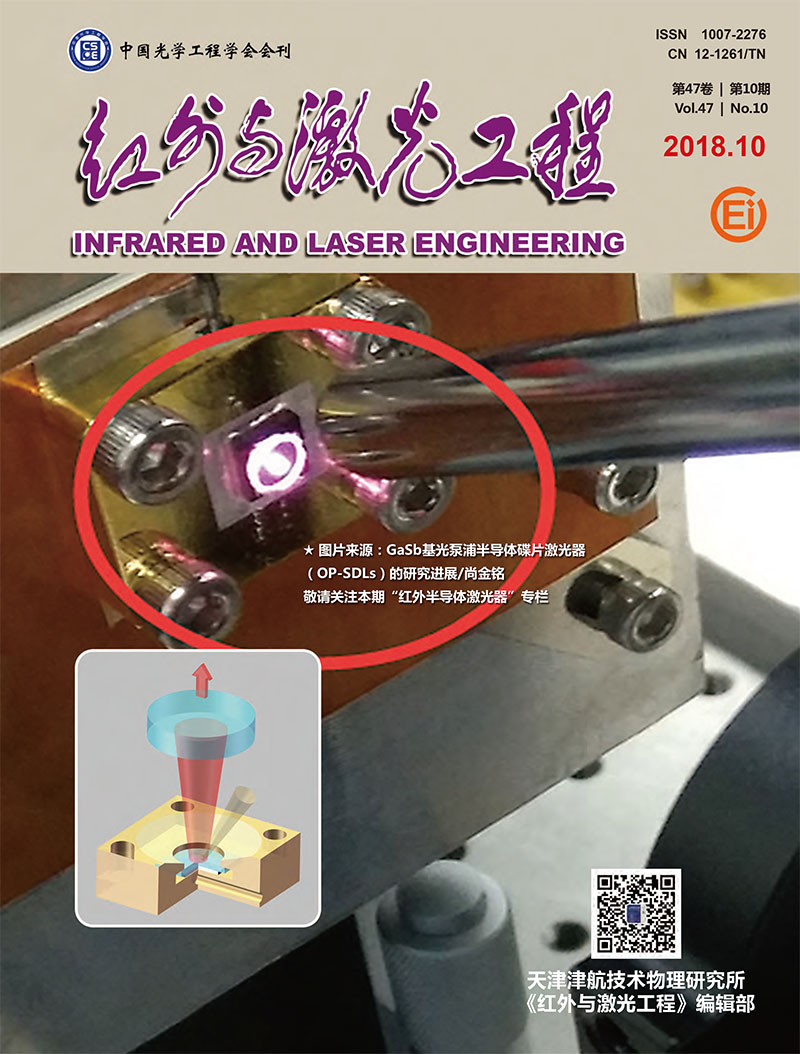Ma Lindong, Li Yudong, Guo Qi, Wen Lin, Zhou Dong, Feng Jie. Total ionizing dose radiation effects in 4T-CMOS image sensors at different biased conditions[J]. Infrared and Laser Engineering, 2018, 47(10): 1017002-1017002(5). doi: 10.3788/IRLA201847.1017002
| Citation:
|
Ma Lindong, Li Yudong, Guo Qi, Wen Lin, Zhou Dong, Feng Jie. Total ionizing dose radiation effects in 4T-CMOS image sensors at different biased conditions[J]. Infrared and Laser Engineering, 2018, 47(10): 1017002-1017002(5). doi: 10.3788/IRLA201847.1017002
|
Total ionizing dose radiation effects in 4T-CMOS image sensors at different biased conditions
-
Ma Lindong1,2,3
,
-
Li Yudong1,2
,
-
Guo Qi1,2
,
-
Wen Lin1,2
,
-
Zhou Dong1,2
,
-
Feng Jie1,2
- 1.
Key Laboratory of Functional Materials and Devices for Special Environments of Chinese Academy of Sciences,Xinjiang Technical Institute of Physics and Chemistry,Chinese Academy of Sciences,Urumqi 830011,China;
- 2.
Xinjiang Key Laboratory of Electronic Information Material and Device,Urumqi 830011,China;
- 3.
University of Chinese Academy of Sciences,Beijing 100049,China
- Received Date: 2018-05-05
- Rev Recd Date:
2018-06-03
- Publish Date:
2018-10-25
-
Abstract
To study the effect of total dose effect and biasing effect on image sensor performance, Cobalt-60 gamma ray irradiation and annealing experiments were carried out on 0.18 m process buried 4T-CMOS active pixel image sensor under different bias conditions. Emphasis was placed on the variation of parameters such as dark current and full well capacity with cumulative dose. The experimental results show that with the accumulation of total dose of irradiation, the dark current increases slowly in the early stage, and then the degradation is obviously aggravated. The main source of dark current in 4T -CMOS image sensor currents from STI interface and depletion width increase touching to STI, which aggravates degradation of dark current. Full well capacities have a drop after irradiation, which was due to the the photodiode capacitance decreases when the depletion width increases induced by radiation. And there is no remarkable biasing effect at 4T-CMOS image sensor. degradation of dark current.
-
References
|
[1]
|
Furuta M, Nishikawa Y, Inoue T, et al. A high-speed, high-sensitivity digital CMOS image sensor with a global shutter and 12-bit column-parallel cyclic A/D converters[J]. IEEE Journal of Solid-State Circuits, 2007, 42(4):766-774. |
|
[2]
|
Yan Jinyun, Jiang Jie, Zhuang Guangjun. Photoelectric response of ICMOS on total dose irradiation[J]. Optics and Precision Engineering, 2014, 22(12):3153-3159. (in Chinese) |
|
[3]
|
Shoushun C, Boussaid F, Bermak A. Robust intermediate read-out for deep submicron technology CMOS image sensors[J]. IEEE Sensors Journal, 2008, 8(3):286-294. |
|
[4]
|
Wang Bo, Li Yudong, Guo Qi, et al. Total dose effects in 0.5m CMOS active pixel image sensor[J], Chinese Journal of Luminescence, 2015,36(2):242-248. (in Chinese) |
|
[5]
|
Wang Bo, Wen Lin, Li Yudong, et al. Degradation of saturation output of CCD induced by proton, neutron and cobalt-60 irradiation[J]. Infrared and Laser Engineering, 2015, 44(S1):35-40. (in Chinese) |
|
[6]
|
Bogaerts J, Dierickx B, Mertens R. Random telegraph signals in a radiation-hardened CMOS active pixel sensor[J]. IEEE Transactions on Nuclear Science, 2002, 49(1):249-257. |
|
[7]
|
Goiffon V, Hopkinson G R, Magnan P, et al. Multilevel RTS in proton irradiated CMOS image sensors manufactured in a deep submicron technology[J]. IEEE Transactions on Nuclear Science, 2009, 56(4):2132-2141. |
|
[8]
|
Wang X Y. Noise in submicron CMOS image sensors[D]. Delft:Technische Universiteit Delft, 2008. |
|
[9]
|
Hopkins I H, Hopkinson G R. Random telegraph signals from proton-irradiated CCDs[J]. IEEE Transactions on Nuclear Science, 1993, 40(6):1567-1574. |
|
[10]
|
Hopkins I H, Hopkinson G R. Further measurements of random telegraph signals in proton irradiated CCDs[J]. IEEE Transactions on Nuclear Science, 1995, 42(6):2074-2081. |
|
[11]
|
Bogaerts J, Dierickx B, Meynants G, et al. Total dose and displacement damage effects in a radiation-hardened CMOS APS[J]. IEEE Transactions on Electron Devices, 2003, 50(1):84-90. |
|
[12]
|
Nuns T, Quadri G, David J P, et al. Measurements of random telegraph signal in CCDs irradiated with protons and neutrons[J]. IEEE Transactions on Nuclear Science, 2006, 53(4):1764-1771. |
-
-
Proportional views

-









 DownLoad:
DownLoad: